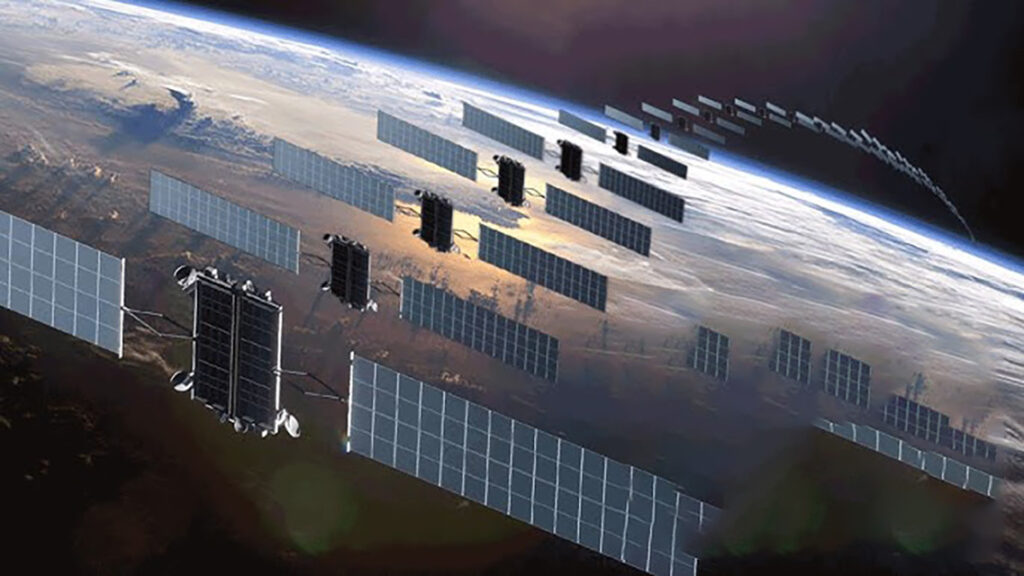A400 Series Air Security Radars for Drone, UAV & UAS Detection - Blighter
Blighter’s A400 series range of air security radars build on the heritage of its successful Blighter B400 series ground surveillance radars. A400 series radars are modular non-rotating, electronic-scanning (e-scan) systems using power efficient PESA (passive electronically scanned array) and FMCW (frequency modulated continuous wave) technologies to provide reliable, small and slow drone (UAV, UAS, RPV) detection even in complex environments.
A400 series air security radars are optimised for the detection of small drones carrying video cameras, wireless communication systems, narcotics, explosives and other malicious payloads. A400 series radars use D3 (Digital Drone Detection) technology that enables them to extract the tiny radar reflections from modern plastic bodied UAVs even when flying close to the ground or near buildings where clutter reflections are relatively large. Blighter’s Ku-band operating frequency is ideally suited to detecting the small structures used to construct compact UAVs such as the control wires, battery pack, motor and wireless communications system.
A400 Series Air Security Radar Configuration Options
The A400 series radars are offered in three configurations. The Blighter A402 radar covers a horizontal azimuth scan sector of 90°, the Blighter A422 radar covers 180° and for 360° surveillance a dual-A422 back-to-back configuration can be used. Vertical elevation coverage is selected by use of either the W20S antennas (20° standard or 30° extended coverage) or the M10S antennas (10° standard or 15° extended coverage). An optional Blighter Radar Tiliting System (BRTS Mk 2) allows the A400 radar to provide increased volumetric air coverage combined with drone altitude indication.
Detection Performance
A400 series radars are capable of detecting DJI Phantom drones at ranges from 10 m to more than 3 km and larger drones and aircraft at ranges up to 20 km. Drone speeds ranging from hover-drift to over 400 km/h are all detected. Target tracking software and extensive zone filtering facilities allow drones to be detected while reducing false alarms from birds.

Architectural Overview
- Radar type: E-scan Frequency Modulated Continuous Wave (FMCW) Doppler Radar
- Radar mode: tri-mode (air, ground and coastline)
- Frequency band: Ku band
- Spectrum occupancy: 15.7 to 17.2 GHz
- Scan type: fully electronic scanning in azimuth (‘e-scan’) using a Passive Electronically Scanned Array (PESA)
- Transmitter power (nominal): 4 Watt
- Multi-radar operation: supported and unlimited
- Embedded software and firmware: field upgradeable via network connection
Target Detection Performance
- Maximum detection ranges:
– RCS 0.01 m²: 2.73 km (1.7 mi.)*
– RCS 0.05 m²: 4.09 km (2.54 mi.)*
– RCS 0.1 m²: 4.87 km (3.03 mi.)*
– RCS 0.5 m²: 7.28 km (4.52 mi.)*
– RCS 1.0 m²: 8.66 km (5.38 mi.)*
– RCS 10.0 m²: 15.40 km (9.57 mi.)* - Maximum targets per scan: 700
- False Alarm Rate (FAR): 1 false alarm per day (adjustable)
- Minimum detectable target radial velocity: 0.37 km/h (0.23 mph)
*Free space detection performance. A400 series radar with M10S antennas. UAV detection ranges are highly dependent upon construction of the airframe and of the onboard electronics and payload.
Coverage
- Instrumented maximum range: 20 km (12.4 mi.)
- Instrumented minimum range: less than 10 m (33 ft.)
- Azimuth scan angle: 90° (A402), 180° (A422) or 360° (Dual A422) horizontal e-scan
- Elevation beam (vertical beamwidth):
10 to 15° (M10S Antennas) or
20 to 30° (W20S Antennas)
- Fastest scan time (for 90°): 1.0 s
- Fastest scan time (in Drone Spotlighting Mode): 0.25 s
Connectivity & Software
- Main I/O interface (for radar control and target data): 10/100 Ethernet network interface
- Auxiliary I/O interfaces: RS-232 and RS-422 control lines, opto-isolated control/status inputs and isolated switched contact outputs
- Software (SDK): API software library (Windows) and generic Interface Control Document (ICD) are both available to System Integrators
Electrical
- Battery/regulated-PSU input range: from 12 V to 28 V (DC)
- Vehicle supply input range: from 12 V to 24 V (DC)
- Power consumption (from 12 V regulated-PSU): 100 W (nominal)
Physical, Environmental & Reliability
- External dimensions of radar unit(s) (W x H x D)*: 666 mm x 503 mm x 128 mm (26.2 in. x 19.8 in. x 5.0 in.)
- Weight of main radar unit (approx.)*: 25 kg (55 lb.)
- Weight of auxiliary radar unit(s) (approx.)*: 21 kg (46 lb.)
- Operating temperature: from -32° C to +60° C (from -25° F to +140° F)
Note: extended operating temperature version available
- IP rating: IP66 (dust tight and protected against powerful water jets)
- MTBF: > 65,000 h
* excluding antennas, mountings and solar shield
Errors and omissions excepted. Blighter Surveillance Systems Ltd reserves the right to modify specifications without notice. Blighter radars are protected by a number of international patents. The Blighter name is an international registered trademark.
BSS-1310 ©2020 Blighter Surveillance Systems Ltd




No comments:
Post a Comment